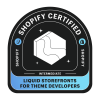
Why is ecommerce order tracking critical for omnichannel success?
Do you want to succeed in omnichannel commerce? If yes, you should consider the critical role of eCommerce order tracking. Order tracking is one of the important components of a seamless shopping experience. Additionally, incorporating the flywheel model will further improve the process.
This article explores the importance of the omnichannel commerce strategy. We’ll show you how the flywheel model helps streamline the order management process.
By leveraging the latest tools and strategies for automated tracking, inventory management, and customer engagement, you will create a powerful cycle of growth. Thus, you’ll achieve long-term success in the competitive world of online sales.
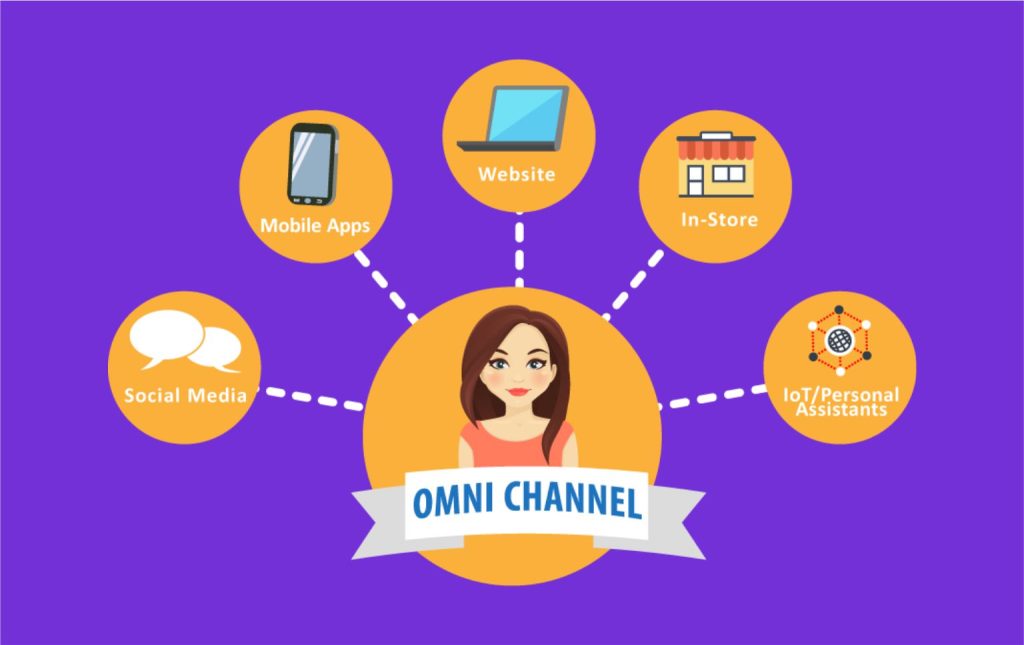
Today’s shoppers want a lot from eCommerce businesses. With the rise of omnichannel commerce, customers expect a seamless shopping experience. Across all channels and touchpoints, buyers all around the world desire businesses to:
- offer a wide selection of products,
- have easy-to-use websites and mobile apps,
- organize fast and reliable shipping,
- have affordable prices,
- provide exceptional customer service,
- nourish personalized experiences tailored to their needs and preferences.
Businesses must leverage the latest tools and strategies to fulfill expectations. Data analysis, customer engagement, and marketing automation became unavoidable tools. Meet ALL expectations. Deliver a superior customer experience and build lasting relationships with customers. Drive long-term success in highly-competitive surroundings.
What is Omnichannel Commerce?
The omnichannel commerce strategy offers customers a smooth shopping experience through various channels. It creates an ecosystem that allows customers to shop how they want, when they want, and where they want.
Customers can shop:
- online,
- in-store,
- through mobile apps,
- social media,
- marketplaces
and receive the same high-level service at every touchpoint.
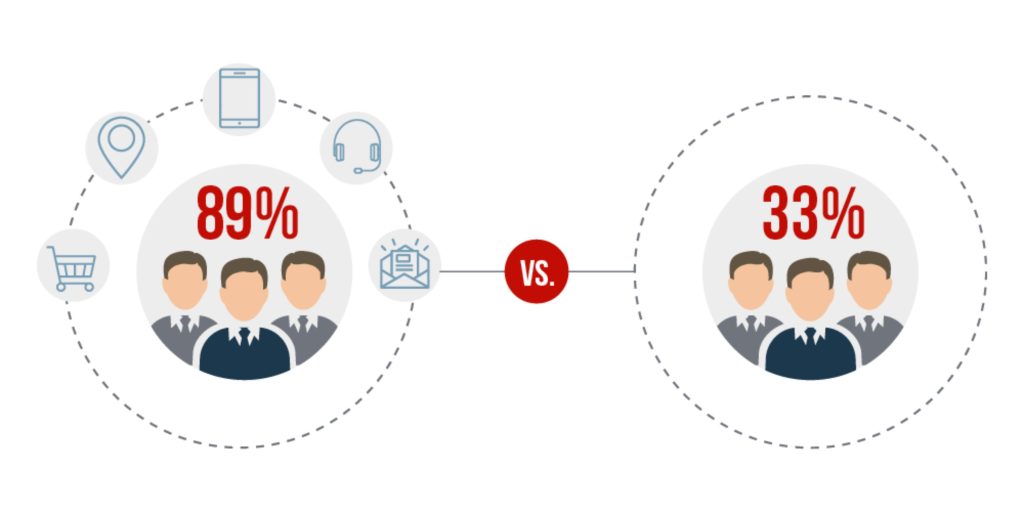
The concept of omnichannel marketing arose in the early 2010s. Marketing expert Kevin Sterneckert first used the term “omnichannel” in 2013. The report titled “Optimizing the Cross-Channel Experience” was for Gartner.
Sterneckert said:
“Omnichannel is a strategy that unifies all channels to deliver the same customer experience”.
He highlighted the need to end barriers between channels and focus on customer needs.
Do Not Fall Behind – Learn From the Fortune 500
You can learn a lot about omnichannel marketing from companies like
- Nike,
- Netflix,
- Ikea,
- Zara,
- Tesla,
- Adidas,
- Gucci,
- McDonald’s,
- and other Fortune 100 companies
They use the latest technologies to provide an excellent shopping experience.
Some of the best practices that these companies have implemented include:
- Prioritizing customer needs and preferences
- Leveraging data and analytics
- Integrating online and offline channels
- Focusing on innovation and experimentation.
Do not try to use all best practices at once. Take cues from the most innovative and successful organizations. Adapt them to your business. That is the only way to stay ahead of the curve and create an unforgettable customer journey.
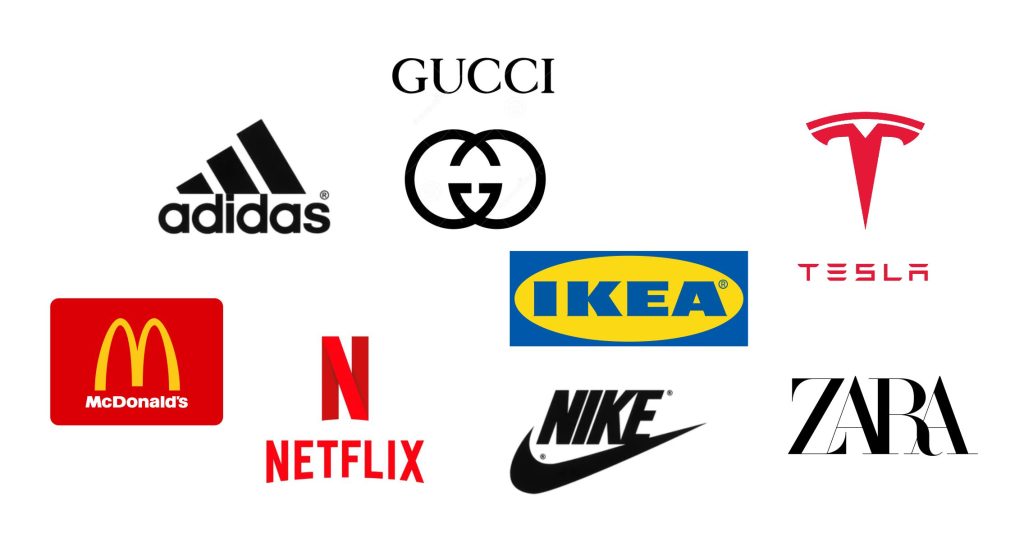
All the Benefits You’ll Get from the Omnichannel Strategy
Here are the six benefits you’ll experience when you implement the omnichannel strategy:
1) Increased customer satisfaction
A seamless shopping experience across multiple channels and touchpoints creates loyal customers. They will feel appreciated and understood.
2) Improved customer engagement
Omnichannel strategy allows you to interact with customers on a more personal level. You will tailor the shopping experience to their needs and preferences.
3) Greater brand awareness
Leverage the latest technologies for data management, inventory management, and customer engagement. Increase your brand visibility and reach new audiences.
4) Increased sales and revenue
Personalized and consistent experience will build loyalty, thus increasing sales and revenue.
5) Streamlined operations
Omnichannel strategy removes barriers between channels. It prioritizes customer needs leading to efficiency and streamlined operations.
6) Competitive advantage
If you adopt an omnichannel approach, you’ll stay ahead of the competition. Differentiate your eCommerce business from other sellers who didn’t adopt the latest strategies.
The Power of Synergy: Integrate Omnichannel Strategy, Order Tracking, and Flywheel Model
You should take one more step to optimize your marketing strategy. Establish a synergy between the omnichannel strategy, order tracking, and the flywheel model. Your sales will skyrocket.
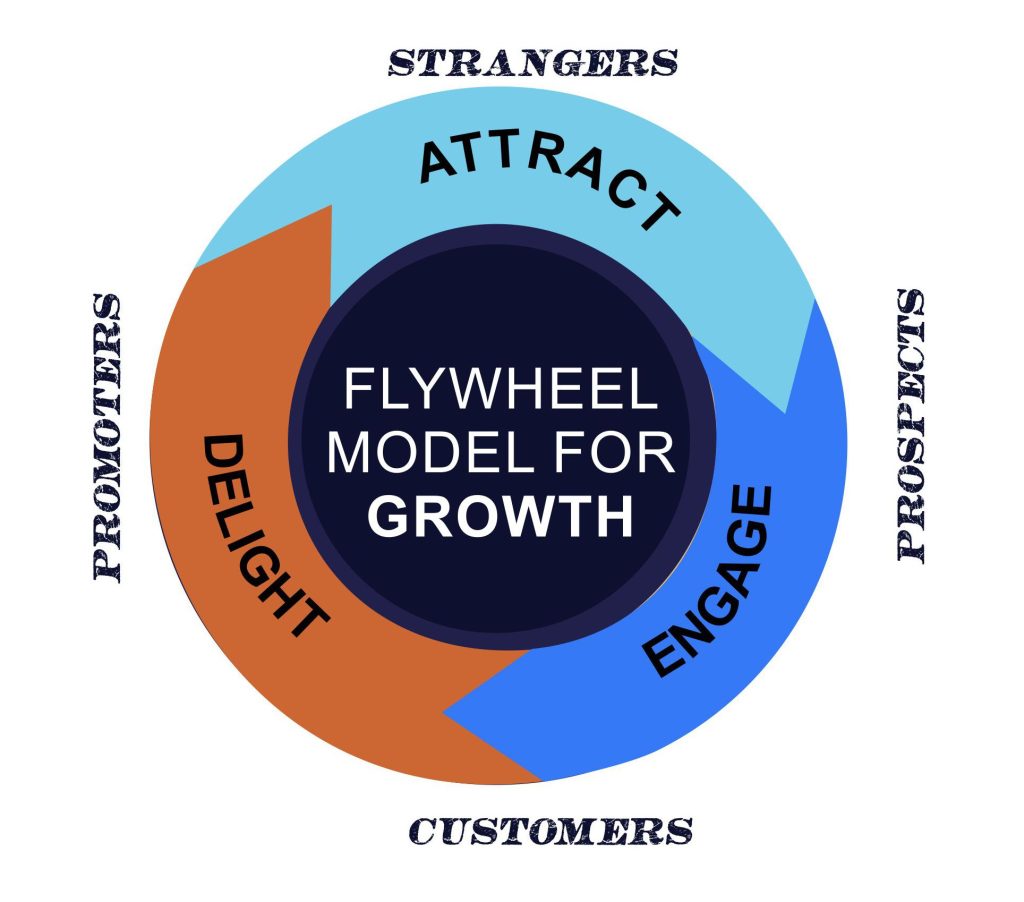
What is Flywheel Model
The flywheel model is a business growth strategy launched by HubSpot. HubSpot grew from a few million dollars to over a billion dollars worth of business. Their growth is based on the flywheel model.
The flywheel model puts customers at the center, as the most important asset of any business. If a business focuses on buyers’ needs and preferences, it will generate sales and growth.
The flywheel model is a circular process that consists of three stages:
- attract
- engage
- delight
In the attract stage, marketing and advertising are the main tools to draw in potential customers.
In the engage stage, sales and customer service convert prospects into paying customers.Delight stage: customer support and retention strategies are major players. Keeping customers happy and engaged is the goal. The delight stage encourages them to refer new customers.
The Benefits of Incorporating a Flywheel Model into eCommerce Order Tracking
eCommerce order tracking means following the delivery status from checkout to delivery. It is an essential feature of eCommerce. Shipment tracking gives customers real-time updates on their orders’ location and delivery status.
eCommerce shipment tracking uses tracking codes. It follows orders as they move through different stages of the delivery process. Steps are:
- picked up by the carrier,
- sorted at a distribution center,
- delivered to the customer.
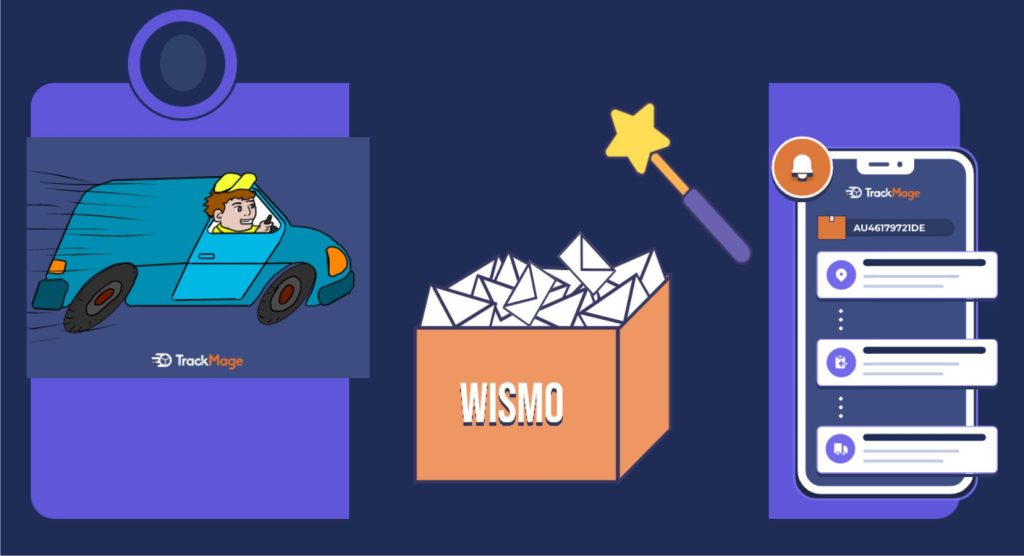
How Can You Triple Conversions In The Engage Stage With a Shipment Tracking
Shipment tracking is more than a utility for the customers.
The omnichannel commerce model leverages order tracking during the Engage flywheel model stage. The goal is to triple conversions and sales.
During the engage stage, the customer is waiting for the package. They are already highly engaged. Shipment tracking automation will send them personalized up-sell emails and order location notifications. Statistical data show that this method results in a 30-95% increase in sales.
Regular updates on the shipping status keep customers engaged. It shows them that you’re active and invested in their shopping experience. They are open to up-sell suggestions and recommendations based on their buying history.
How Can Order Tracking Maximize the Effect of The Delight Stage
Omnichannel marketing strategy says: shipment tracking is your secret weapon for profit growth. During the delight stage, there is an opportunity for you to extend your customer service, improve customer satisfaction, build long-lasting relationships, and significantly increase repeat purchases.
During the Delight stage of the Flywheel Model, customers are satisfied with the purchase. They are looking for a positive experience that will exceed their expectations. They look for an exceptional experience to reinforce or justify purchasing decisions.
Customers are in a state of happiness and suspense as they eagerly await the arrival of their order. They are much more open to recommendations based on their positive experience. Happy buyers will leave positive reviews and recommend your business to others.
Combine omnichannel marketing, order tracking, and the flywheel model. You will maximize the positive effects of the delight stage.
10 Essential Aspects to Consider During Delight Stage for DTC eCommerce Growth
DTC eCommerce companies should use proven tactics to grow sales. Here are 10 best practices to maximize the effects of the delight stage:
1) Personalized Follow-Up Emails
Post-purchase, send personalized emails thanking customers for the sale. Include suggestions for other products they may like based on their recent purchases.
2) Exceptional Customer Service
Ensure you have a strong customer service team to respond to all queries and complaints. Offer multiple ways for customers to reach you (email, phone, social media, etc.). Resolve their concerns in a positive manner.
3) Customer Loyalty Programs
Introduce a loyalty program. Offer points or rewards for repeat purchases. This will entice customers to return to buy more.
4) Exclusive Discounts
Offer exclusive discounts or early access to new products for repeat customers. Make them feel valued and appreciated.
5) Request for Reviews and Feedback
Encourage customers to leave reviews and feedback to help others make decisions. Ask them to provide valuable insights for further improvement.
6) Product Quality and Value
Continue to offer high-quality products that provide value for money. Customers are more likely to return if satisfied with their previous purchases.
7) Personalized Recommendations
Use customer browsing and purchasing habits data to provide personalized product recommendations.
8) Follow-up surveys
Conduct follow-up surveys to gather feedback on the post-purchase experience. Use them to increase customer satisfaction and identify areas for improvement.
9) Referral programs
Offer referral programs. Reward customers for referring friends and family to your online store.
10) Community Building
Cultivate a sense of community for your customers. Use social media and brand ambassador programs. Turn your customers into brand advocates.
These steps are all geared towards creating an exceptional shopping experience. The goal is to
exceed customer expectations, foster customer loyalty, and drive repeat sales.
What to Look for in a Shipment Tracking Tool
How to choose a shipment tracking tool? Based on the omnichannel marketing strategy and flywheel model, there are 5 key factors:
1) Real-time tracking
Customers receive up-to-date information on their package’s whereabouts throughout the delivery process.
2) Customization
Look for a customizable tool to promote your brand. Provide customers with a seamless and consistent experience.
3) Multi-channel support
Choose a tool that supports many channels- email, SMS, and push notifications. Ensure customers receive tracking updates in their preferred format.
4) Branded tracking page
Consider a tool to create a branded tracking page that aligns with your website’s look and feel. Provide customers with a cohesive and professional brand experience.
5) Delivery alerts
Select a tool that offers delivery alerts, such as estimated delivery time. Keep customers informed and engaged throughout the delivery process.
Reliable Shipment Tracking with TrackMage
TrackMage is a comprehensive eCommerce order tracking software. TrackMage
- simplifies post-purchase customer experiences
- maximizes repeat purchases
- generates positive reviews
- establishes long-term loyalty.
Here are some of the excellent featured TrackMage provides to eCommerce DTC businesses:
1) Tracking status updates
Enable real-time tracking updates to customers. Build trust and enhance their overall experience.
2) Email validations
TrackMage corrects all typos and errors customers make while typing in their emails.
3) Custom domains
Use custom domains. Create branded tracking pages and align them with the website’s look. This creates a more consistent and professional brand experience.
4) Custom email notifications
TrackMage sends tracking updates that suit your brand and customer preferences.
5) Multiple workspaces
Your team will manage different aspects of the order-tracking process and collaborate easily.
6) Multiple branded tracking pages
Allow more targeted and personalized customer experiences. Create several branded tracking pages for different products or promotions.
7) Collect product reviews
This feature enables collecting and displaying product reviews on your branded tracking page. Valuable social proof and feedback are influential factors when people shop online.
8) Shopify and WooCommerce integration
TrackMage helps you manage the order-tracking process. It provides a seamless experience for Shopify and WooCommerce DTC eCommerce business owners.
9) Zapier integration
With Zapier integration, you will connect TrackMage with various other apps and tools. Automate workflows and improve efficiency.
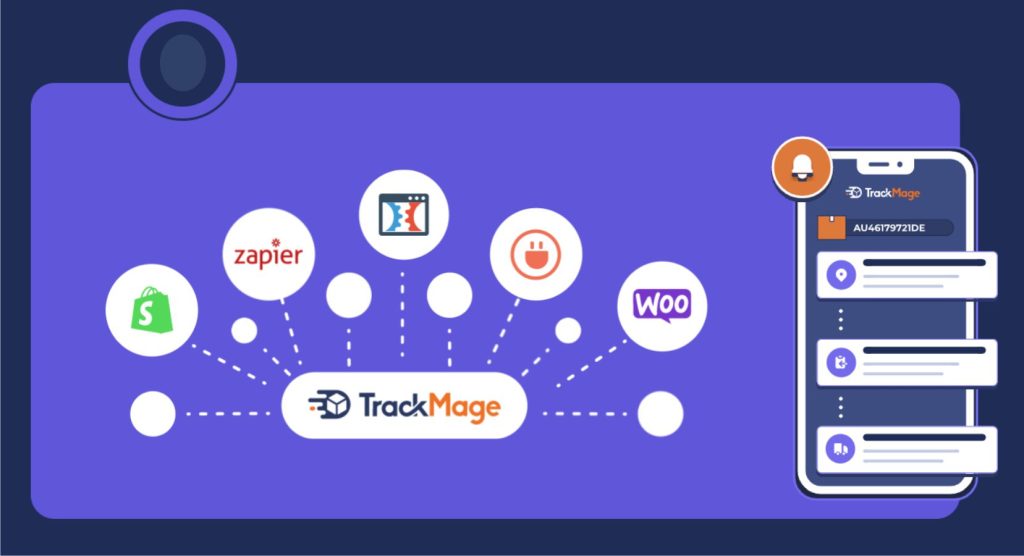
Conclusion
eCommerce order tracking is crucial to online shopping, as customers demand real-time updates. DTC online sellers must go beyond just providing tracking information. They must create a seamless customer experience across all channels. Implementing the flywheel model further leverages customer satisfaction, especially during the delight phase.
To drive repeat purchases and positive word-of-mouth, you must focus on delighting customers. From browsing to checkout to post-purchase communication – all must be enjoyable. eCommerce order tracking and an omnichannel approach will create loyal customers. Loyal customers keep returning to buy more.
